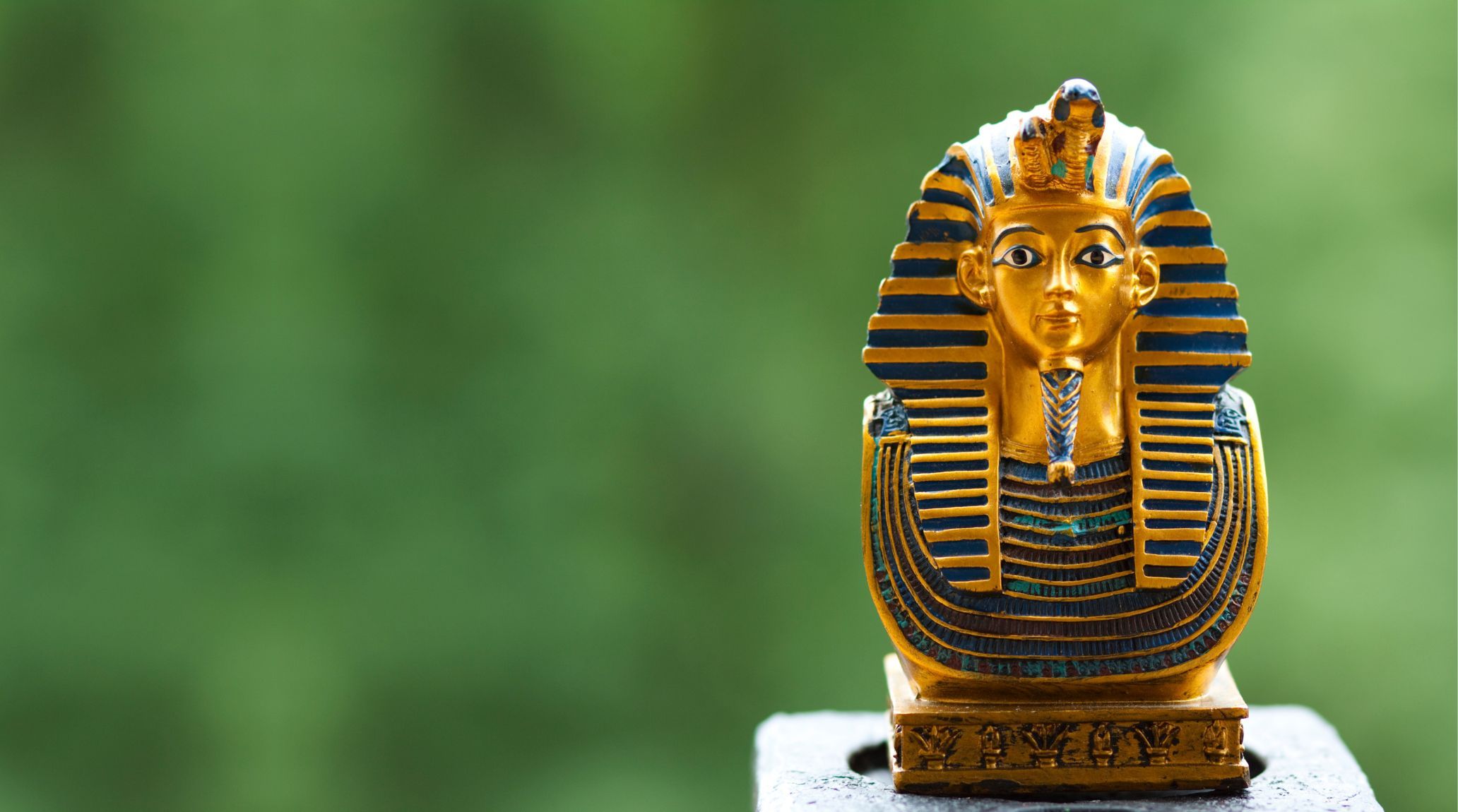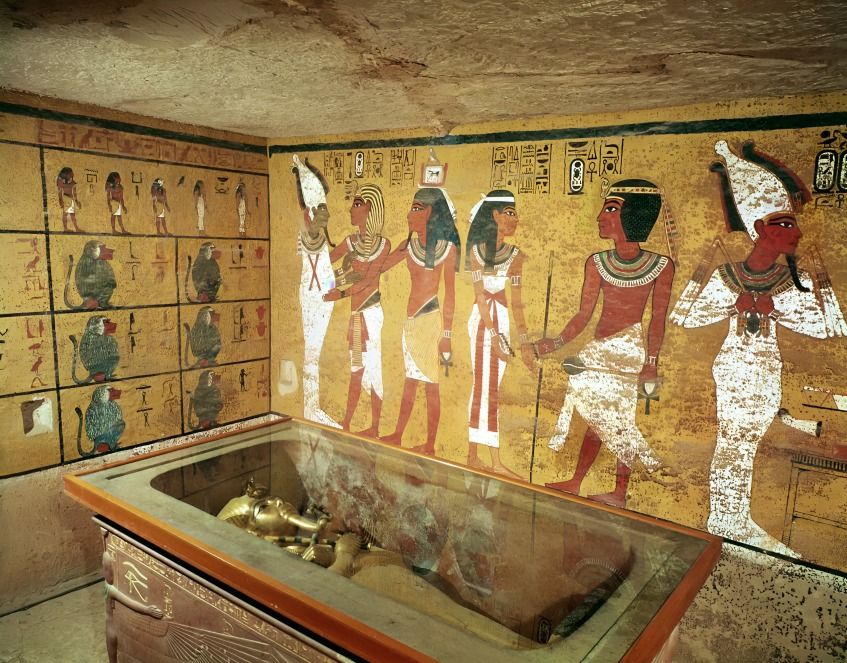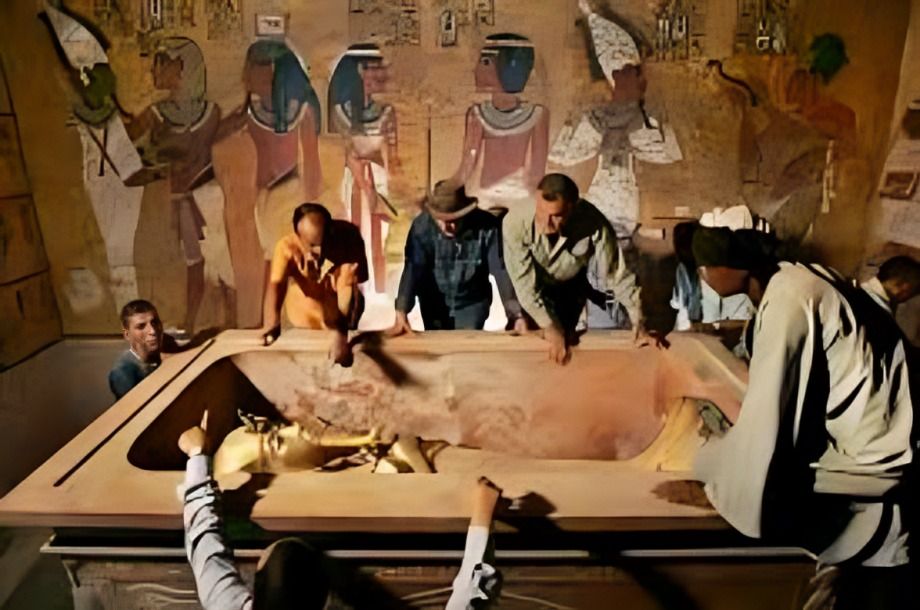
“
Pharaoh Tutankhamun, often referred to as the "Boy King," ruled Egypt during a pivotal era. His short reign, marked by the restoration of traditional Egyptian religion and the splendor of his tomb's discovery, continues to captivate historians and enthusiasts alike. 1
”
Tutankhamun, often referred to as "King Tut," was an ancient Egyptian Pharaoh who ruled from 1333 BCE until his death in 1323 BCE. His early start as Pharaoh marked the beginning of a fascinating chapter in ancient Egyptian history. 1

Despite his brief reign, his tomb holds greater historical significance. The 1922 discovery of his largely intact tomb is regarded as one of the most important archaeological finds of the modern era.
British archaeologist Howard Carter discovered Tutankhamun’s tomb on November 26, 1922. Remarkably, the tomb was still largely intact at the time of its discovery, preserving the treasures within. 2
Over the next 10 years, Howard Carter meticulously supervised the removal and documentation of the tomb’s contents, providing invaluable insight into ancient Egyptian culture.3
Tutankhamun became Pharaoh at the age of nine following the death of Smenkhkare, Akhenaten’s cogent. Soon after his coronation, he married Ankhesenpaaton, Akhenaten’s third daughter and likely the eldest surviving princess. 4
Tutankhamun worked to restore traditional Egyptian religion and art, which had been neglected by his predecessor, Akhenaten. He issued a decree to reinstate the temples, images, and privileges of the old gods. 5
Tutankhamun died at age 19. While an infected broken leg was long thought to be the cause, a 2010 discovery of malaria parasites in his remains suggests that malaria, possibly combined with degenerative bone disease, may have led to his death. 6

In his small tomb, King Tutankhamun's mummy was enclosed within a series of three coffins. The innermost was made of solid gold, while the two outer coffins were gold hammered over wooden frames.
A magnificent golden portrait mask adorned the king's head, with numerous pieces of jewelry and amulets placed on the mummy and within its wrappings. The coffins and stone sarcophagus were encased by four text-covered shrines. 7
The other rooms were packed with furniture, statues, clothes, chariots, weapons, staff, and countless other objects. Despite his short reign, Tutankhamun is more famous today than many of his longer-lived due to the treasures found in his tomb. 8
Tutankhamun's fame soared after the "Treasures of Tutankhamun" exhibit captivated audiences worldwide in the 1960s and '70s. Today, these treasures are housed at the Grand Egyptian Museum in Giza, Egypt. 9
In addition to his golden burial mask, King Tut's tomb contained sandals with paintings of his enemies on the soles. This clever design ensured that, symbolically, the king trampled his foes with every step he took. 10
Tutankhamun was likely the son of Pharaoh Akhenaten, the controversial ruler who attempted to shift Egypt to monotheism. His mother is believed to be Akhenaten's sister, identified only as the "Younger Lady." 11
During his reign, Tutankhamun restored the worship of Amun, reversing the monotheistic reforms of his father Akhenaten. This shift helped stabilize Egypt politically and religiously. 12

Scientific analysis of Tutankhamun's remains revealed that he suffered from multiple health issues, including a clubfoot, scoliosis, and possibly malaria, which may have contributed to his early death.
Tutankhamun was married to Ankhesenamun, who was also his half-sister. They had two daughters, both of whom were stillborn, as revealed by the discovery of their mummies in his tomb. 13
Tutankhamun's tomb, located in the Valley of the Kings, is one of the smallest in the royal necropolis. This suggests he may have died unexpectedly, and his burial was arranged hastily. 14
Although his reign was relatively uneventful, Tutankhamun's legacy endures primarily due to the treasures found in his tomb, which provided a wealth of information about ancient Egyptian culture. 15
The treasures of Tutankhamun, including his famous golden mask, are now housed at the Grand Egyptian Museum in Giza. This collection remains one of the most visited and admired in the world. 16
Unlike many other pharaohs’ tombs, Tutankhamun’s was relatively untouched by tomb robbers, preserving a wealth of treasures. His well-preserved mummy has been extensively studied and displayed in Egypt’s museums. 17


